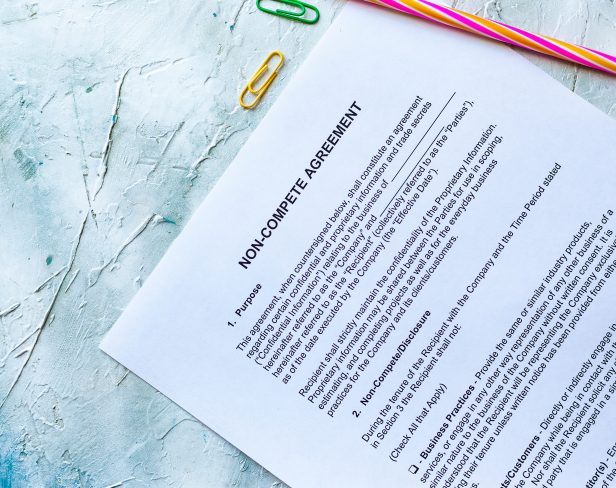To prevent sexual harassment in the workplace, it’s important to understand the key underlying drivers of sexual harassment. Sexual harassment is a social problem. Stopping it is not just about altering the behaviour of individuals; we need to change the culture and environment of workplaces in which it occurs. To prevent sexual harassment from happening in the first place, we must recognise the systemic and contextual issues that drive these behaviours. Primary prevention is all about addressing the root causes (or drivers) of sexual harassment.[1]
In December 2022, a positive duty on employers and persons conducting a business or undertaking (PCBU) to eliminate workplace sex discrimination and harassment commenced.
Employers need to carefully consider their legal obligations arising under these new provisions.
This article discusses a number of issues that arise with respect to the positive duty and provides some information about how to prevent sex discrimination and harassment occurring and some advice on how to make sure that you comply with the positive duty.
The Anti-Discrimination and Human Rights Legislation Amendment (Respect at Work) Act 2022 (Cth) amended the Sex Discrimination Act 1984 (Cth) (SD Act) by introducing a positive duty on employers and PCBUs to eliminate:
- workplace sexual harassment, sex discrimination and sex-based harassment;
- conduct that amounts to subjecting a person to a hostile workplace environment on the ground of sex; and
- victimisation.
This important change requires employers to shift their focus to actively preventing workplace sex harassment and discrimination, rather than responding after it occurs.
Regulatory powers have also been provided to the Australian Human Rights Commission (AHRC) to investigate and enforce compliance with the positive duty.
The focus on prevention of workplace sexual harassment and discrimination shifted responsibility from those who experience discrimination and harassment to those who are best placed to prevent it: employers and PCBUs.
Provisions that relate to compliance with the positive duty, including the ability of the AHRC to conduct inquiries into compliance with the positive duty, issuing compliance notices, the enforcement of compliance notices and entering into enforceable undertakings, commenced on 13 December 2023.
The provisions put into practice Recommendation 28 of the Respect@Work Report (Report) which recommended that, “the Fair Work system be reviewed to ensure and clarify that sexual harassment, using the definition in the Sex Discrimination Act, is expressly prohibited”.
The provisions summarised below about the prohibition against sexual harassment in connection with work commenced on 6 March 2023.
These provisions do not replace the existing prohibition on sexual harassment in the SD Act or the Anti-Discrimination Act 1998 (Tas) (AD Act). However, persons who allege that they have been sexually harassed in connection with work are now able to take action to address that harassment through a range of different ways.
Workers now have the choice to take action under the Fair Work Act (FW Act), or under existing provisions in the SD Act or the AD Act. Unions also now have the right to pursue a claim on behalf of a member or the FWO can take action as a regulator.
The rationale for including these provisions in the FW Act is one of the key findings in the Report that the “… current regulatory framework fails to incentivise employers to create harassment-free workplaces. Instead, our laws place the burden of addressing harassment almost entirely on the individual.”
The new provisions are also designed to alleviate the burden on individuals having to address sexual harassment in the workplace by enabling other parties to represent the person making the allegations or to otherwise take action in relation to what a person has experienced in relation to their work.
These provisions in the FW Act apply to sexual harassment which occurs on or after 6 March 2023.
Positive duty to prevent sexual harassment
Most employers and PCBUs will already have in place a number of measures that are required to enable them to comply with the positive duty. The amendments provide employers and PCBUs with an opportunity to review and, if necessary, update the measures they have in place to address sex discrimination and sexual harassment.
What is required under the positive duty?
An employer or the PCBU must take reasonable and proportionate measures to eliminate, as far as possible, specified forms of unlawful sex discrimination, including:
- sex discrimination;
- sexual and sex-based harassment;
- hostile work environments; and
- victimisation.
The focus of the positive duty is on prevention and taking action early.
Steps to take to build positive workplace culture include:
Be aware of heightened risk factors for sexual harassment. Consider circumstances where power imbalances exist and legal-services industry systemic factors such as low diversity, inequality, gender imbalances in relationships, isolated working environments and instances of poor workplace culture.
Assess and manage risks. Identify risks inside and outside your practice or workplace, drawing on relevant guidance, evidence, and past experiences to develop an understanding of what they are and what actions you can take to reduce or eliminate them. If you are not able to eliminate risks, minimise them so far as is reasonably practicable.
Foster a positive workplace culture. Build a culture of openness, trust and respect that is supported by policies, human resources practices, staff education and training. This helps to minimise the risk of sexual harassment and supports a culture where any instances are either reported or dealt with in a way that minimises harm to workers. Ensure that a “culture of silence” or acceptance of inappropriate behaviour doesn’t exist.
Show strong leadership. Senior managers should set a strong example of the types of behaviours and cultures which prevent workplace sexual harassment.
Provide information, training and education. Adopt new and better approaches to workplace education and training that shows workers, managers and supervisors how to prevent and respond to sexual harassment, actions to take if they experience or witness it and how to report an incident.
Measure your effectiveness. Like any other workplace hazard, employers should measure and understand the prevalence, scope and impacts of sexual harassment and monitor and share the effectiveness of their workplace initiatives to prevent and respond to it.[2]
The positive duty will align with the vicarious liability provisions in the SD Act where an employer may be found liable for the unlawful acts done by their employees or agents if an employer has not taken “reasonable steps” to prevent conduct occurring.
Most employers have already taken some steps to make it clear that sex discrimination and sexual harassment are unacceptable in the workplace and have adopted a number of practical measures to reinforce this. There are already positive duties under WHS laws to eliminate or minimise, so far as is reasonably practicable, risks to health and safety, which include risks of sexual harassment, victimisation and other risk causing sex discrimination.
The new positive duty is intended to operate concurrently with existing duties in WHS laws.
Enforcement of positive duty
The AHRC is empowered to monitor and assess compliance with the positive duty. These powers include options to:
- conduct inquiries into compliance with the positive duty and provide recommendations to achieve compliance;
- give a compliance notice specifying the action to be taken, or refrain from taking, to address their non-compliance;
- apply to the federal courts for an order to direct compliance with the compliance notice; and
- enter into enforceable undertakings.
The AHRC may initiate an inquiry into a person’s compliance with the positive duty if it “reasonably suspects” that a person is not complying.
The AHRC has been resources to enforce compliance with the positive duty including:
- to educate employers about the positive duty to prevent workplace sexual harassment and assess their compliance;
- to facilitate a disclosure process for historical incidents of sexual harassment to support victim-survivors and identify improvements to systems and processes; and
- to ensure the AHRC is the central point of contact for information on workplace rights and responsibilities and provides a coordinated referral service.
The Commission has published comprehensive resources for employers and PCBUs about how they can comply with the positive duty, including:
- Guidelines
- An Information Guide
- A Quick Guide
- A Resource for Small Business
- Factsheets
The Guidelines for Complying with the Positive Duty under the Sex Discrimination Act 1984 (Cth) will be used by the AHRC in assessing compliance with the positive duty.[3]
A leading objective of the AHRC is to help employers and PCBU’s to improve their own practices.
What should you do now:
- Implement appropriate policies and procedures on bullying, discrimination and harassment including sexual harassment which meet the extensive legislative and case law requirements. Review existing policies to ensure that they are up to date.
- Ensuring that all employees attend anti-bullying, discrimination and harassment training, including information about what constitutes sexual harassment and ensuring employees understand avenues for reporting cases of this type of conduct.
- Outline the types of behaviours, attitudes and language that disrespect or exclude people based on gender, gender identity, sexual orientation or assumptions about dominant gender stereotypes and socially prescribed gender roles.
- Provide details about what will occur if policies are breached.
- Act promptly and document any investigation process and provide support to all parties involved during any investigation process.
[1] www.respectatwork.gov.au/individual/understanding-workplace-sexual-harassment/what-causes-workplace-sexual-harassment
[2] Comcare – Workplace Sexual Harassment: Practical Guidance for Employers: www.comcare.gov.au



